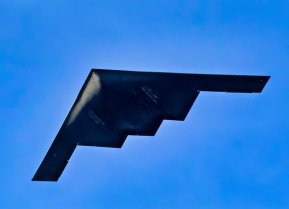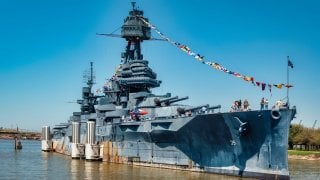Navy Battleship USS Texas Takes a Big Step On a 'Comeback'
The USS Texas, a historic battleship that served in both World Wars, is currently undergoing a $35 million restoration in Galveston, Texas. As the only remaining dreadnought of its era, its preservation is crucial for future generations.
Summary: The USS Texas, a historic battleship that served in both World Wars, is currently undergoing a $35 million restoration in Galveston, Texas. As the only remaining dreadnought of its era, its preservation is crucial for future generations. Moved from its long-standing location in La Porte to the Gulf Copper shipyard, the USS Texas will stay dry-docked for extensive repairs until later this summer. Launched in 1912, it played significant roles across two global conflicts and was decommissioned in 1946. Now under the stewardship of the Battleship Texas Foundation, it continues to serve as a valuable educational and historical resource.
USS Texas Battleship Undergoes $35 Million Revival in Galveston
The USS Texas has been dry-docked in Galveston, Texas, to undergo a lengthy $35 million restoration. As the only surviving dreadnought to serve in both the First and Second World Wars, the battleship is a significant historical artifact worthy of preservation into the future.
The Battleship Texas Foundation, a state-appointed organization tasked with maintaining the USS Texas, first revealed in 2023 that the revered warship would head to a new home. After spending more than seven decades positioned across from the San Jacinto Monument in La Porte, the battleship was moved to the Gulf Copper shipyard in Galveston for repairs. According to the foundation, the battleship will remain dry-docked until later this summer as critical restoration work proceeds.
The History of the USS Texas
First launched in 1912, the USS Texas was the second and final New York-class super-dreadnought battleship. Featuring several design improvements over their predecessors, the Texas and sister ship USS New York were the first battleships equipped with 14-inch/45-caliber Mark 1 guns, which could fire 1,400-pound armor-piercing shells. The Texas’ second battery added twenty-one 5-inch/51-caliber guns. Four 21-inch torpedo tubes for the Bliss-Leavitt Mark 8 torpedo were incorporated on the carrier’s port-side bow and stern and its starboard bow and stern.
The USS Texas was constructed by Newport News Shipbuilding and was commissioned in 1914 with Capt. Albert W. Grant in command. The same year, she departed Norfolk Navy Yard.
Around this time, Mexican federal troops detained a U.S. gunboat at Tampico. In response, President Woodrow Wilson ordered the USS Texas to sail to Mexican waters alongside other naval vessels. While the incident was quickly resolved, Wilson later commanded forces to seize a customs house off the Mexican coast in retaliation.
When World War I began, the Texas opened fire on a suspected German U-boat spotted by the merchant vessel Magnolia. While the U-boat sighting was never confirmed, the Texas had fired the first American shots of the war.
The battleship primarily carried out convoy and blockade duty during the war, and in 1919, the Texas became the first U.S. battleship to launch an aircraft, a significant feat. In the mid-1920s, the Texas sank the incomplete battleship Washington as part of the Naval Arms Limitation treaty of 1922. She then received a range of modifications as part of a lengthy overhaul, including the addition of six new Bureau Express oil-fired boilers. The Texas also played a role in the Second World War, deploying to North Africa as part of Operation Torch and firing a total of 273 rounds.
Decommissioning
The USS Texas was decommissioned in 1946 after more than 30 years in service. She was the first and oldest of the eight U.S. battleships to become permanent floating museums. In 2019, the Battleship Texas Foundation was granted operational control of the vessel for a period of 99 years. Once the USS Texas receives proper care and restoration, she is expected to remain an active museum for decades to come.
About the Author: Maya Carlin
Maya Carlin, National Security Writer with The National Interest, is an analyst with the Center for Security Policy and a former Anna Sobol Levy Fellow at IDC Herzliya in Israel. She has by-lines in many publications, including The National Interest, Jerusalem Post, and Times of Israel. You can follow her on Twitter: @MayaCarlin.


